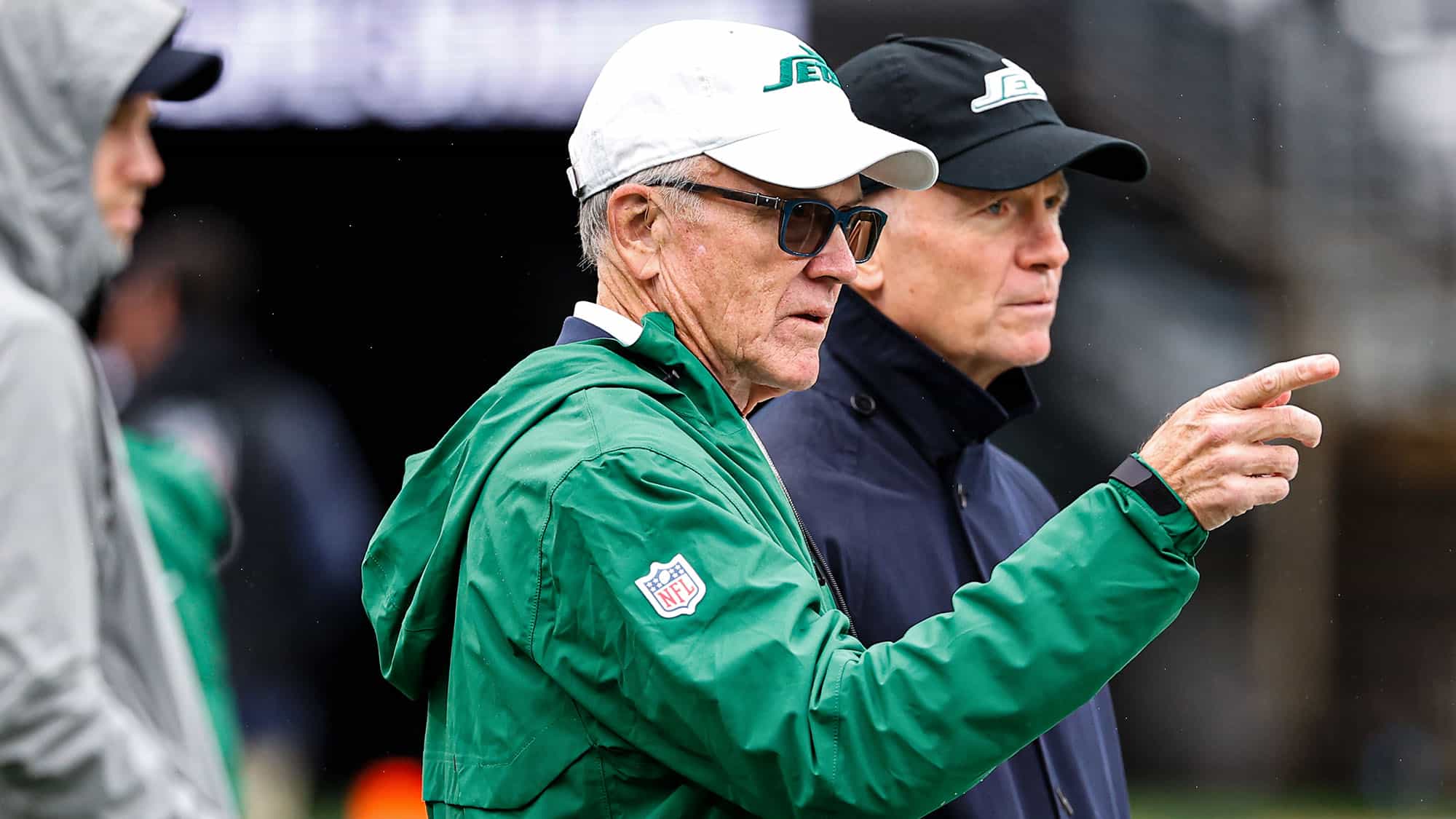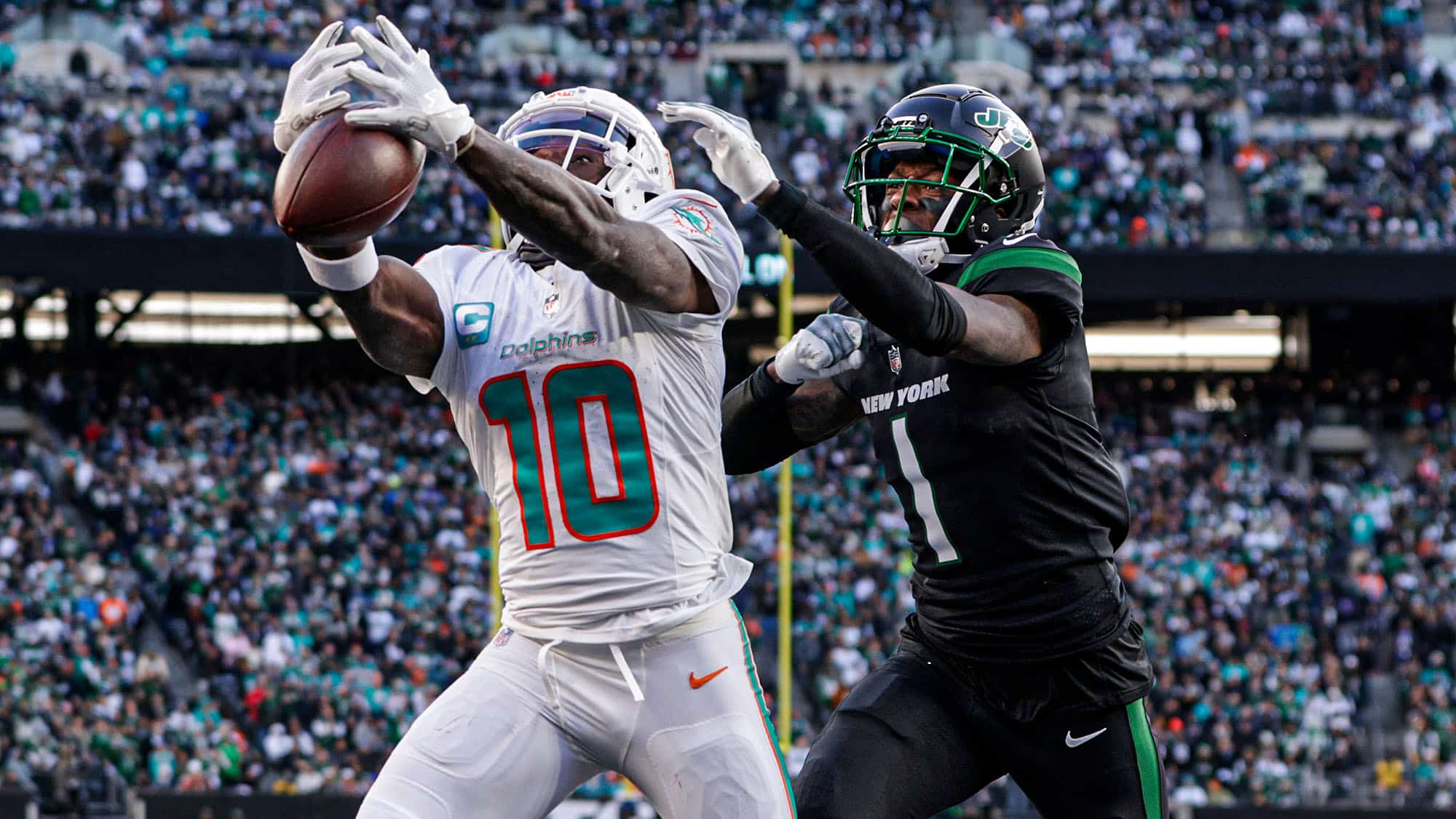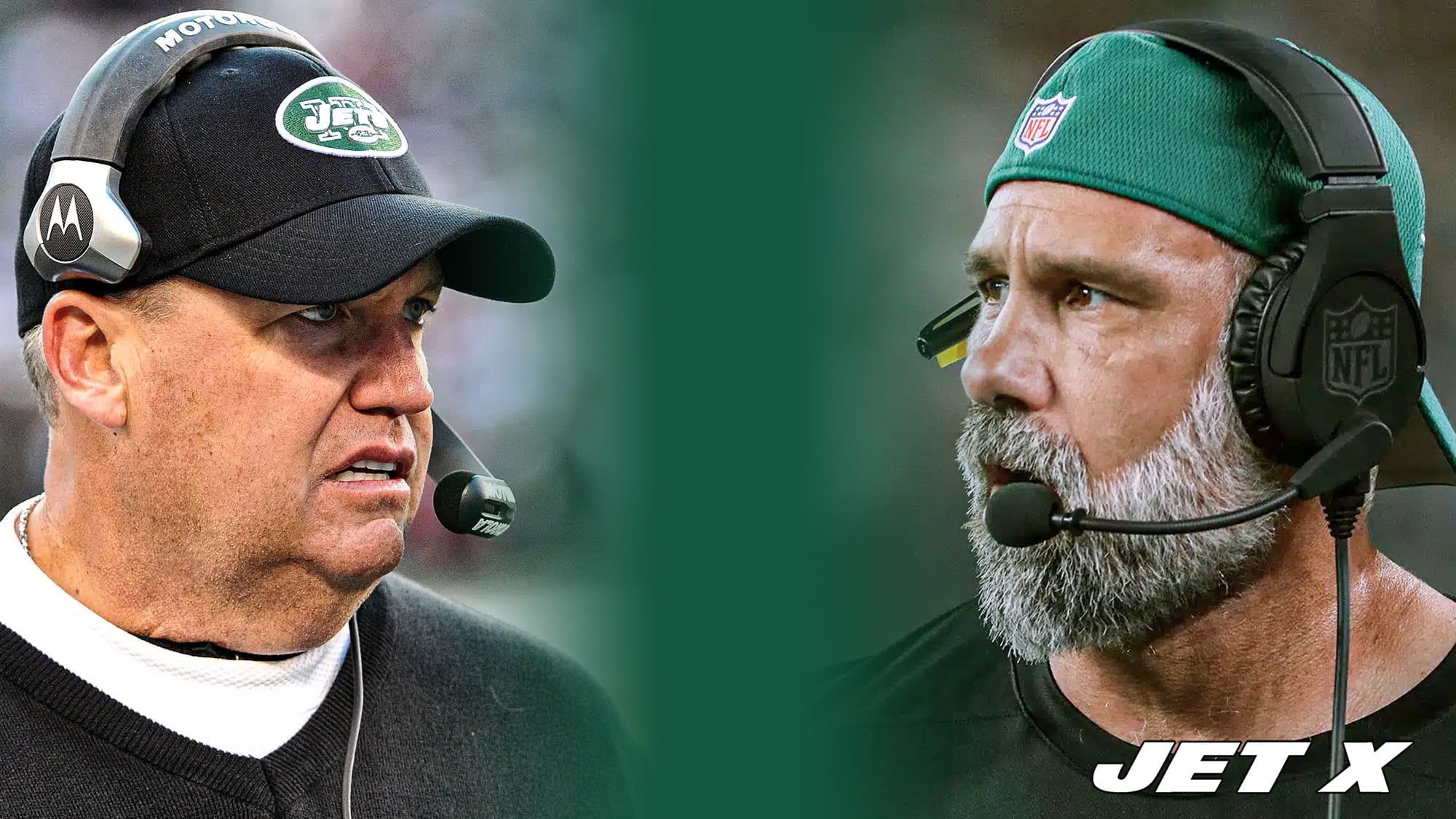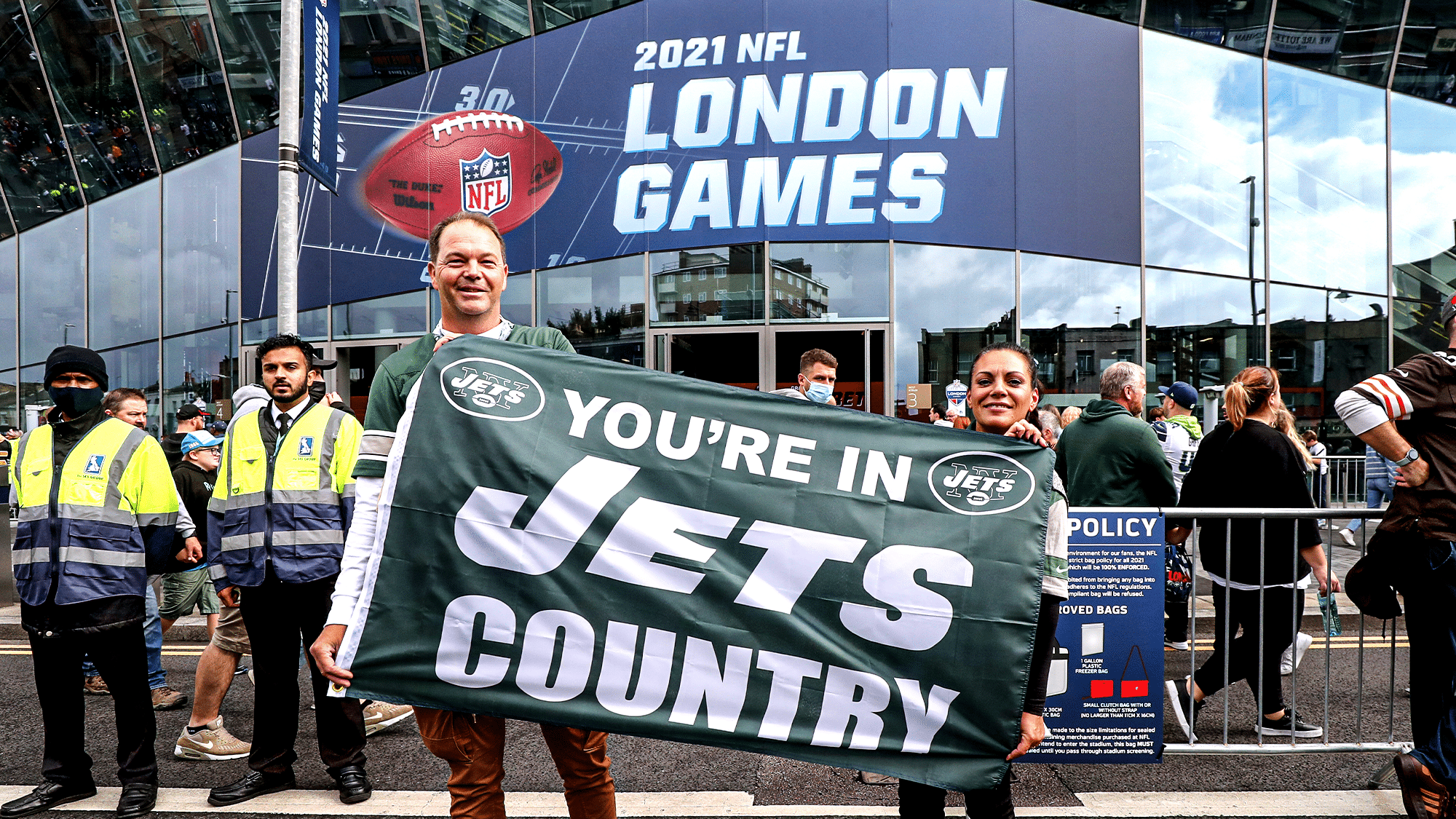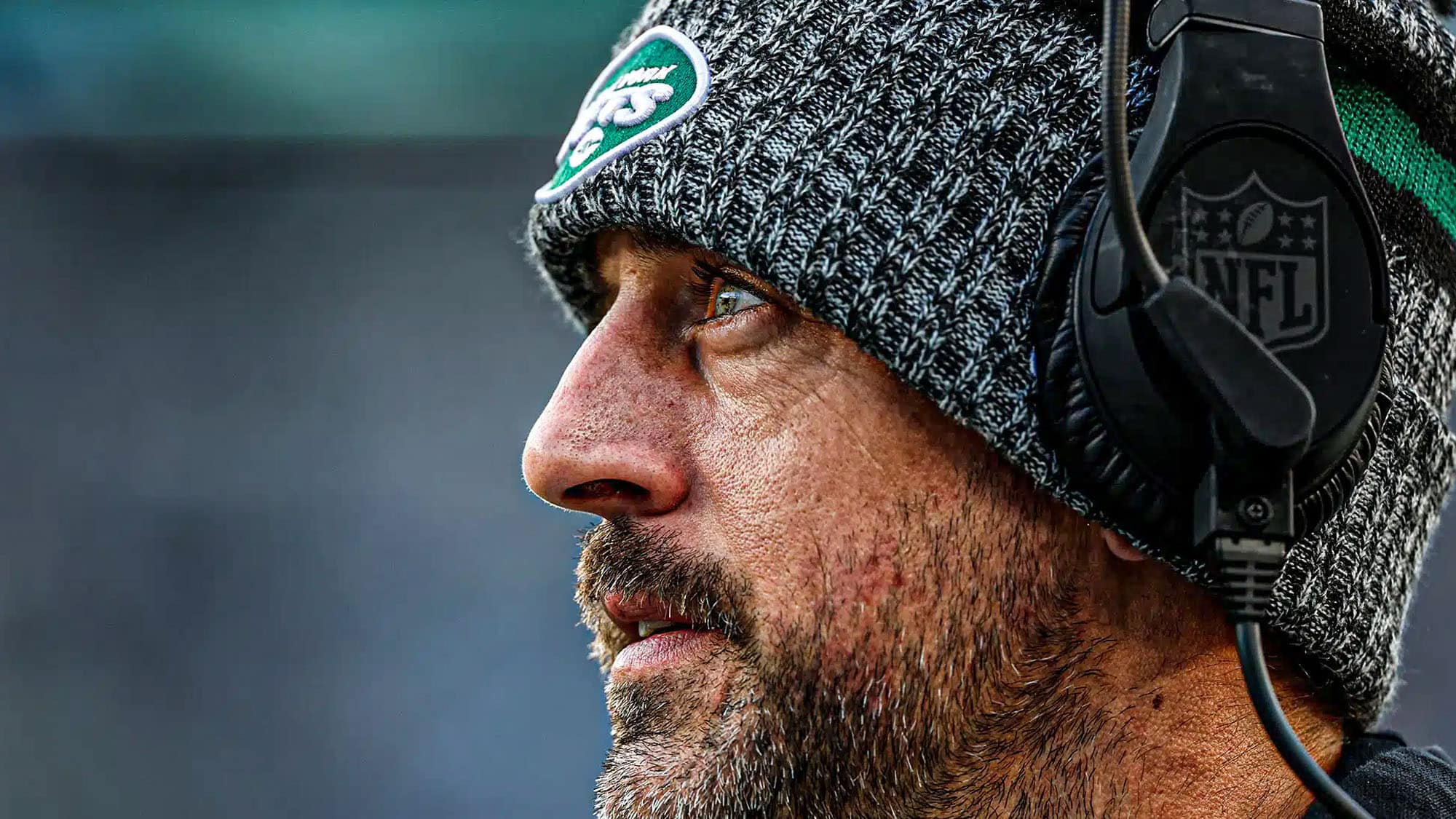The New York Jets’ Morgan Moses trade signals a whole new vision for the offensive line
Morgan Moses is back with the New York Jets, and there’s a lot to talk about.
Here is a collection of thoughts and takeaways after Joe Douglas’ big trade to fill another starting spot on the Jets’ offensive line. We’ll start by discussing Moses’ individual skill set before diving into the fascinating signals the Jets have sent by making this trade.
What does Moses bring to the table?
First of all, let’s talk about what Moses will bring to the Jets on the field.
Moses is coming off a strong season in Baltimore at 32 years old. He started 14 games at right tackle and played a pivotal role in the success of Baltimore’s fourth-ranked scoring offense.
In pass protection, Moses posted impressive numbers across the board. According to Pro Football Focus, Moses allowed 25 total pressures (5 sacks, 0 hits, 20 hurries) on 450 pass-blocking snaps, a pressure rate of 5.6% that ranked 30th out of 83 qualified tackles (65th percentile). His 1.1% sack-plus-hit rate ranked 17th (80th percentile).
Furthermore, according to NFL Next Gen Stats, Moses averaged 3.3 seconds from snap to pressure, which ranked ninth-best (90th percentile). This signifies that, even when Moses did get beat, it usually took a fairly long time, meaning his mistakes tended not to be very costly. It shows that he was generally able to hold up for extended periods of time if the Ravens needed him to.
John Simpson ranked highly in the same category. The Jets have added two pass-blockers who are capable of hanging tough on long-lasting plays when needed, which should buy Aaron Rodgers plenty of time to scan the field.
John Simpson allowed an average time to pressure of 3.32 seconds last season, 5th-longest from a left guard alignment (min. 300 pass blocks).
Jets left guards allowed a 9.7% pressure rate and a 2.74-second average time to pressure last season, 6th-highest and 4th-quickest in the… https://t.co/PxZbiYknJq pic.twitter.com/WKGt3xa2Pe
— Next Gen Stats (@NextGenStats) March 12, 2024
Moses also generated excellent statistics in the run game. PFF was extremely high on his run blocking, as Moses ranked 10th-best among tackles with a 77.2 run-blocking grade.
Moses is a powerful, aggressive blocker who thrives on gap concepts, which made him a perfect fit in Baltimore’s gap-heavy run scheme. I watched some film from Baltimore’s road win over Cleveland’s elite defense, and Moses’ run blocking on gap concepts jumped off the screen. He generated plenty of vertical movement on double teams when blocking downhill, and he also showed the ability to pull.
First play of the game, nice double on the 3T, then climbs and seals the LB out of the lane, Edwards runs behind him for big gain pic.twitter.com/vXRjx9QZA2
— Michael Nania (@Michael_Nania) March 13, 2024
Tons of movement driving the DT downfield, and Edwards runs behind him for another big gain.
Between Simpson and Moses, Jets are establishing a new identity for their OL. pic.twitter.com/ers7w9MuPn
— Michael Nania (@Michael_Nania) March 13, 2024
Nice pull to lead the big gain.
With plenty of good pullers on the team, this feels like it’s going to be a gap running team. More power football in the ground game and less lateral zone running. pic.twitter.com/Pr5Hw93o41
— Michael Nania (@Michael_Nania) March 13, 2024
That brings me to my next thought…
Are the Jets looking to become a power-running team?
The Jets have largely been a zone-running team for the past few years. When Robert Saleh was hired, he brought Mike LaFleur with him from San Francisco to integrate the 49ers’ wide zone scheme. LaFleur relied heavily on wide zone for two years until his departure from the team. Nathaniel Hackett replaced LaFleur in 2023 and also leaned toward wide zone, as he looked to integrate the offense that Aaron Rodgers ran in Green Bay under Mike’s brother, Matt.
Rather than seek athletic linemen who fit their wide zone tendencies, the Jets have gone in the complete opposite direction so far. They added two players in Simpson and Moses who both stood out as ideal fits on a gap-heavy, downhill, power-running Ravens team. Neither Simpson nor Moses is known for their athleticism. Both are better known as powerful maulers, and that’s why they did well in Baltimore.
So, unless the Jets are foolishly trying to fit two square pegs into round holes, I think it’s pretty clear that they are seeking to establish a new identity for their offensive line. After years of trying to replicate the 49ers’ athletic, lateral-blocking unit, the Jets are pivoting to building a gritty, bruising offensive line that wants to run the ball straight down the opponent’s throat.
I think this is a wise decision for many reasons.
Why it makes sense to convert to a power OL
1. They have the players to do it
First of all, the Jets already have the pieces in place to pull it off. While Alijah Vera-Tucker and Joe Tippmann are elite athletes who can thrive in wide zone, they are also excellent pullers. Pulling is a crucial skill for linemen in a gap scheme, and with Vera-Tucker, Tippmann, Simpson, and Moses, the Jets have four guys who can do it well. They are built to punish teams on traps, counters, pin-pulls, and other gap concepts that call for a puller.
Here’s AVT executing a trap on the nose tackle from the right guard spot. Center Connor McGovern leaves the NT unblocked and AVT wraps behind McGovern to kick him out. Breece Hall runs straight up the middle behind AVT’s back for a big gain.
One play that perfectly encapsulates why Breece and AVT were so crucial for the #Jets
There’s no way to replicate the impact these two players provided pic.twitter.com/VxedfoHnRq
— Michael Nania (@Michael_Nania) January 4, 2023
Tippmann’s pulling popped off his college tape.
Another Tippmann pull…another Tippmann pancake pic.twitter.com/cSrxjcQTq8
— Joe Blewett (@Joerb31) July 13, 2023
We saw one pull from Moses earlier, and here’s another pair. He shows some nastiness as he plants a defender in the ground on both plays.
Moses 🥵 pic.twitter.com/dLFuHnlUWg
— Joe Blewett (@Joerb31) March 13, 2024
They just keep coming….Moses 🥞🥞 pic.twitter.com/vOK3nScHIU
— Joe Blewett (@Joerb31) March 13, 2024
Here’s Simpson getting it done.
Really like John Simpson’s pulling ability.
They have some good pullers between him, AVT, and Tippmann. Would like to see them maximize it by mixing plenty of gap concepts into their run game pic.twitter.com/ECKoBwfkna
— Michael Nania (@Michael_Nania) March 13, 2024
I posted his RAS table earlier and it showed his great explosiveness ratings. You can see that here; really explosive getting out of the stance and into the pull. Gets good movement kicking out the edge pic.twitter.com/tLnXu595KJ
— Michael Nania (@Michael_Nania) March 12, 2024
2. It exploits league-wide trends
I think we are entering an era where these types of gap-blocking offenses are going to make a comeback. So, it would be prudent for the Jets to get ahead of the curve.
For years now, the entire NFL has been trying to copy off the success of coaches like Sean McVay, Kyle Shanahan, and Matt LaFleur, who all hail from the Mike Shanahan coaching tree (dating back to that infamous 2013 Washington coaching staff). At this point, it’s incredible how many of the league’s coaches hail from the Shanahan coaching tree.
Seeking to replicate the mold established by the Shanahan offense, wide zone has become king in the NFL. Teams want to stretch the ball outside and hit the edge for home-run plays. Furthermore, this type of run play helps the pass game, as it sets up play-action bootlegs where the quarterback can fake the wide zone and roll back-side into a vacated area.
Because of these league-wide trends, defenses have grown increasingly faster in an attempt to counter the offenses, particularly at linebacker. Guys who can cover ground have become more important than guys who can take on blocks. Burly, stocky linebackers (think David Harris) are going extinct while athletic, rangy linebackers (think Quincy Williams) are taking their place to keep up with modern sideline-to-sideline offenses.
The data backs this up. Draft prospects at EDGE and LB are getting faster and faster each year, but as a consequence, they are also getting smaller and smaller.
Edge defenders and linebackers entering the NFL have gotten lighter and faster over the last four draft classes.
Both position groups in this year's class were among the top 2 lightest classes over the last two decades:
🔹 EDGE: 255.3 lbs (lightest)
🔹 LB: 231.8 lbs (2nd) pic.twitter.com/mDS54y678R— Next Gen Stats (@NextGenStats) March 1, 2024
That’s why I think downhill, mauling offensive lines are about to make a comeback. Defenses have gotten fast enough to outrace linemen to the outside and shut down the wide zone. But now they’re too small to hold up when the offensive line is coming straight at them.
By building a line full of maulers and calling a playbook that exploits the league-wide lack of size at EDGE and LB, the Jets would be preparing themselves to lead the next NFL wave.
Give the Jets some credit
We’ll have to wait until we see the Jets on the field to see if they truly plan to take this path, but from reading the tea leaves, I think it is likely they are heading in this direction. If not, Simpson and Moses would be very curious fits, to say the least.
The Jets are taking a lot of scrutiny right now for a number of different things – both on and off the field. And most of the criticism is justified. The team still has a long way to go on the journey to regain the trust of its fanbase.
With all of that being said, they deserve credit for the vision they have crafted for the offensive line through the additions of Simpson and Moses. For once, it seems like they have a clear blueprint for what they want this unit to look like.


